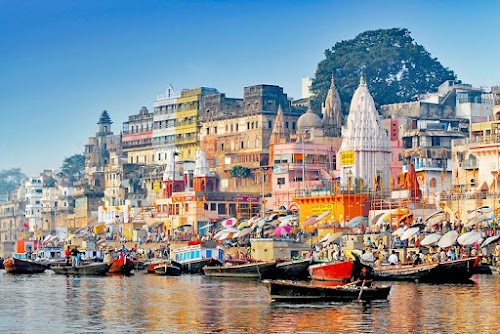
Dashashwamedh Ghat
Varanasi, India
- Explore the nearby temples and markets
- Observe the cremation ceremonies
- Take a boat ride on the Ganga
- Witness the evening Ganga aarti
Known for:
Description:
Dashashwamedh Ghat is the main ghat in Varanasi, India, located on the Ganga River. It is known for its daily evening Ganga aarti ceremony, a vibrant spectacle of light, sound, and chanting. The ghat is a hub of activity, with pilgrims bathing in the sacred waters, priests performing rituals, and vendors selling flowers, incense, and other religious items. Visitors can witness the cremation ceremonies that take place on the ghat, a stark reminder of the cycle of life and death. The ghat's steps offer a panoramic view of the river and the city, especially beautiful at sunrise and sunset. The atmosphere is charged with spirituality and the energy of centuries of devotion.
History:
Dashashwamedh Ghat's name, meaning "ten-horse sacrifice," is linked to the legend of Lord Brahma performing a ten-horse sacrifice here. Historically, the ghat has been rebuilt several times, most notably by the Maratha queen Ahilyabai Holkar in the 18th century. It has served as a significant pilgrimage site for centuries, attracting devotees from across India and the world. The ghat's importance in Hindu mythology and its continuous use as a sacred space have solidified its place as a vital part of Varanasi's cultural and spiritual heritage. The evening aarti ceremony, a relatively recent addition, has become a major attraction, drawing large crowds to witness the elaborate ritual.